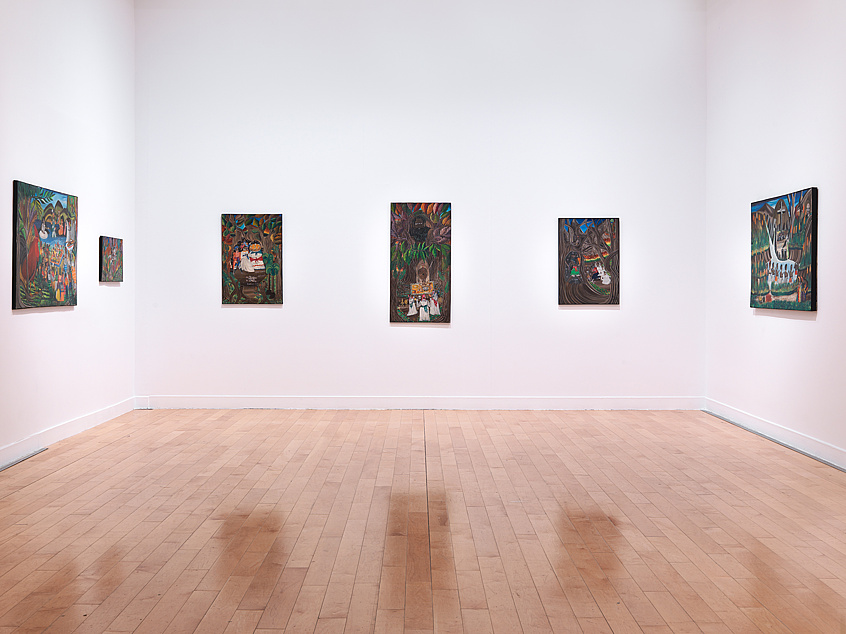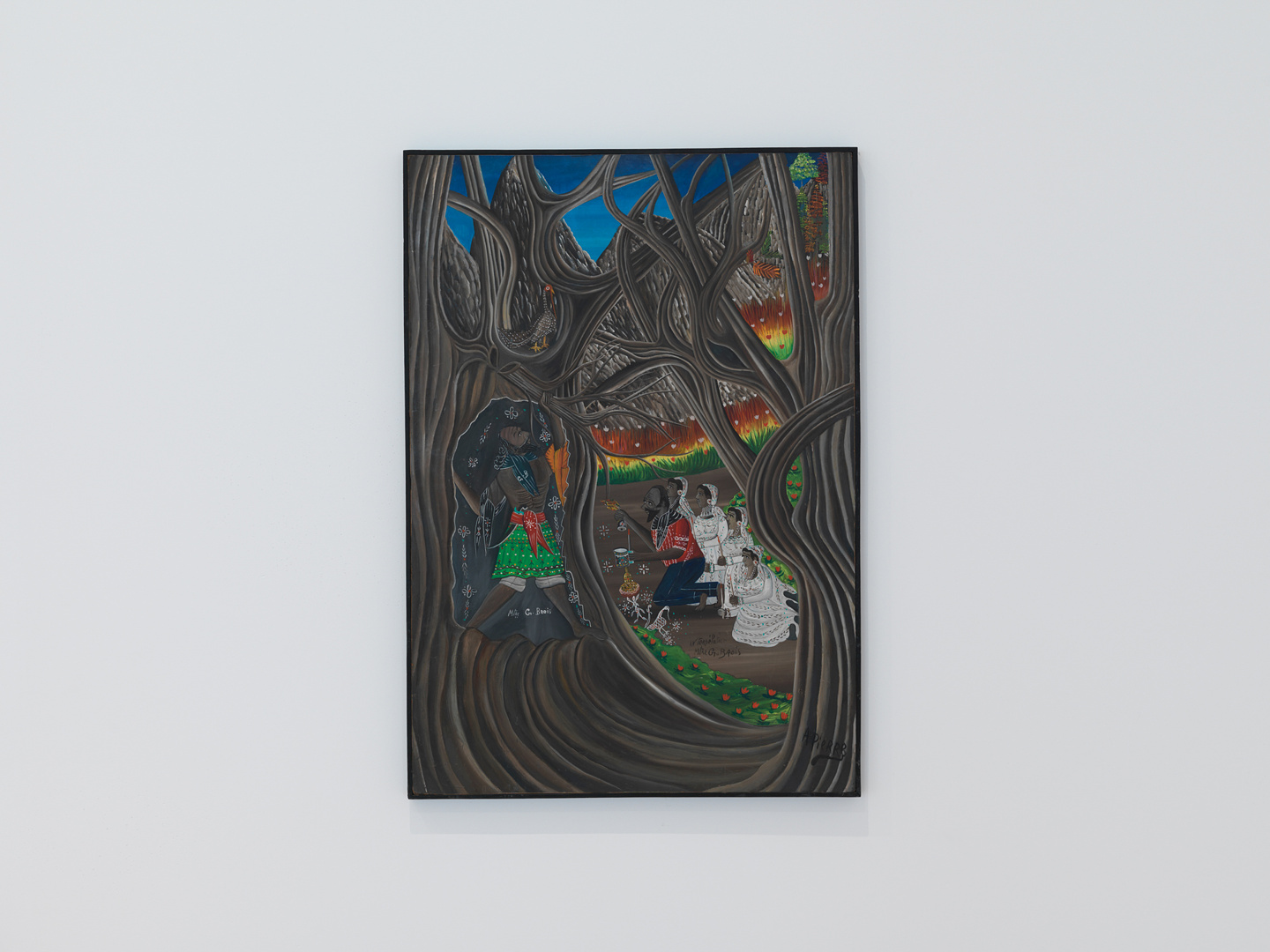
André Pierre, Grand Bois, ca. 1975, installation view, Benaki Museum—Annex Pireos-Strasse, Athens, documenta 14, Foto: Stathis Mamalakis
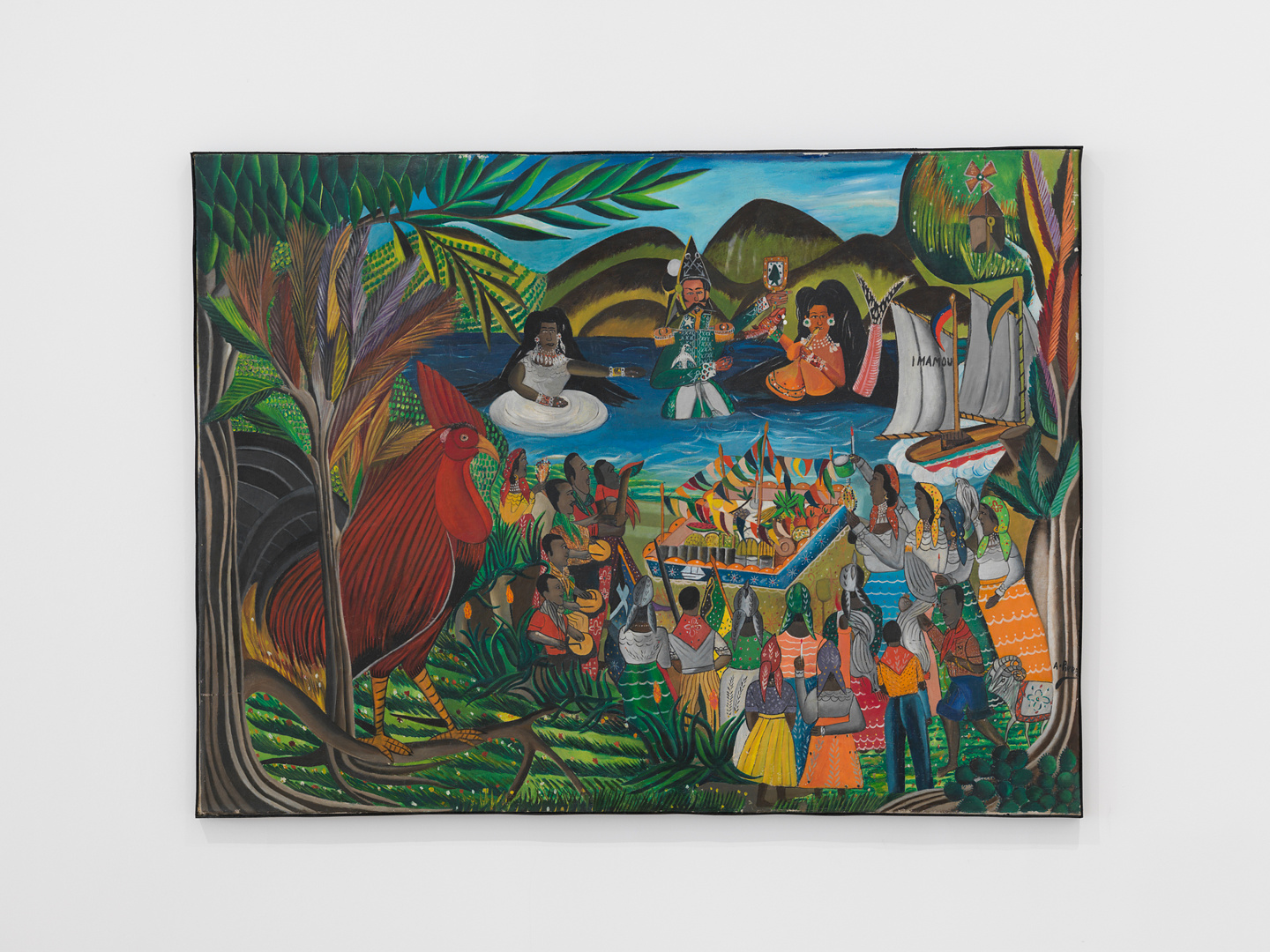
André Pierre, Imamou (1970s), installation view, Benaki Museum—Pireos Street Annexe, Athens, documenta 14, photo: Stathis Mamalakis
Take Grand Bois (1975), with its overlap of fluid, gesticulating branches of the tree/God; or Imamou (1970s), the stature and mysterious prominence of the rooster looking on/in at the ceremony for Agoue, the Haitian God of water. What we meet in these paintings is a Vodou reality; a reality where principles such as depth, perspective, proportion, and harmony are not determined by how one believes the hubristic, biological “human” eye sees. The arrangement of all created things takes its cue from the presence of the divine, which—though present in all things—manifests strongly in one or another figure in each work.
In several of André Pierre’s paintings, we encounter what I feel to be the “vertical pressure” of a sensibility still rooted in the centrality of the divine and the commonplace descent of the divine onto the earthly plane. This vertical pressure is most palpably rendered through the metaphor and axis and axiom of the poto mitan (the central pole) which is sine qua non of the Vodou spiritual tradition. It is there in Le Delogement / Rouangol diyo lal le (late 1960s), amid the jumble and prolixity of color and detail, that we find an unwitting poto mitan, propping up a lean-to, seemingly cutting the painting in half. In Untitled (ca. 1977), it is the crucifix/cross. In other works, like Ceremony Ibo dans la Foret (late 1960s) it is man/God. Or in Ceremony with Issa and Suz (late 1960s), we encounter the beribboned poto mitan itself. Note in this painting how Issa (Issa El Saieh, gallery owner) and Suz (Suzanne Seitz, owner of the Hotel Oloffson)—despite the title of the piece—appear in the periphery of the composition, made conspicuous rather because of their ethnicity.
And even where this poto mitan is not present, it is present. Present for a people for whom presence is not synonymous with the physical or material. To understand the composition in each painting, we are to ask the clichéd question, “where is God in all of this?” The answer, of course, is in everything (tout chòz). In all things great and small—from the fluid limbs of trees, to the human-shaped flowers or the flower-shaped humans of Untitled; to the Lwa (spirits of Haitian Vodou) in Baron Samedi (ca. 1977) or Traitement Mystiquel de Erzuli par Agoue (late 1960s). Or sometimes not in a single thing, but in the small, humble, and multitudinous bodies of Vodou serviteurs teeming toward a wholeness of community required by the faith, as we see in Ceremony with Issa and Suz.
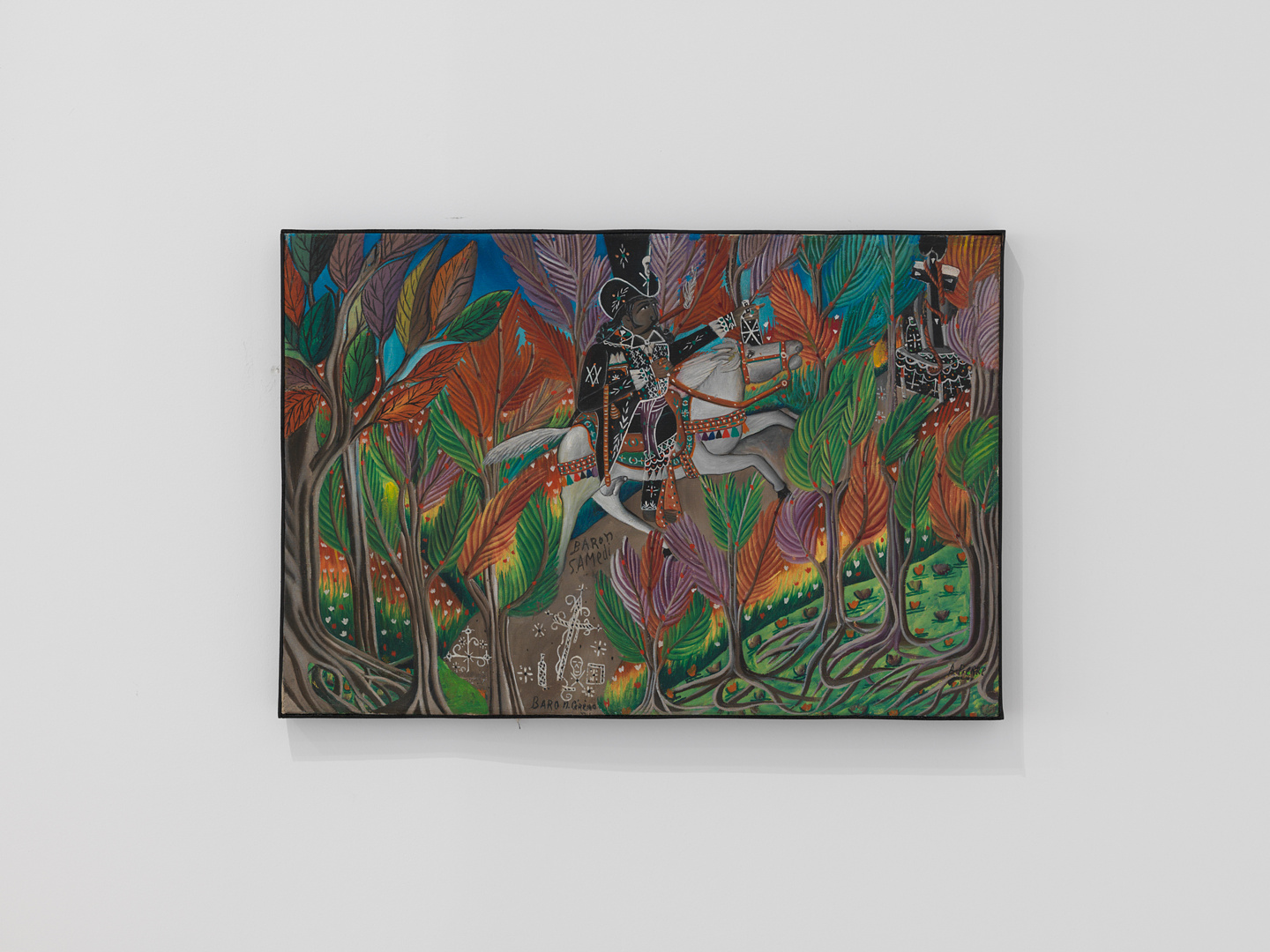
André Pierre, Baron Samedi (ca. 1977), installation view, Benaki Museum—Pireos Street Annexe, Athens, documenta 14, photo: Stathis Mamalakis
The mystical concept of pwen (from French “point”) is useful here. Pwen refers to the precise point of contact between divine force and the earthly plane. The point is usually an “art object” created by those who believe. There is the chante pwen (the sung point), but more commonly, there are the Vèvè ground drawings that Vodou is famous for (surely art in their own right/rite), seen most clearly in Le Grand Assortor (1970s). What organizes the “presences”—not “objects”—in these detailed paintings is where divine presence is most strongly manifested. Obvious sometimes, but at others, mysteriously present; not in the center, but situated at the point where depth begins. Moving inward. Like in that venerable rooster of Imamou.
Who has eyes to see will see.
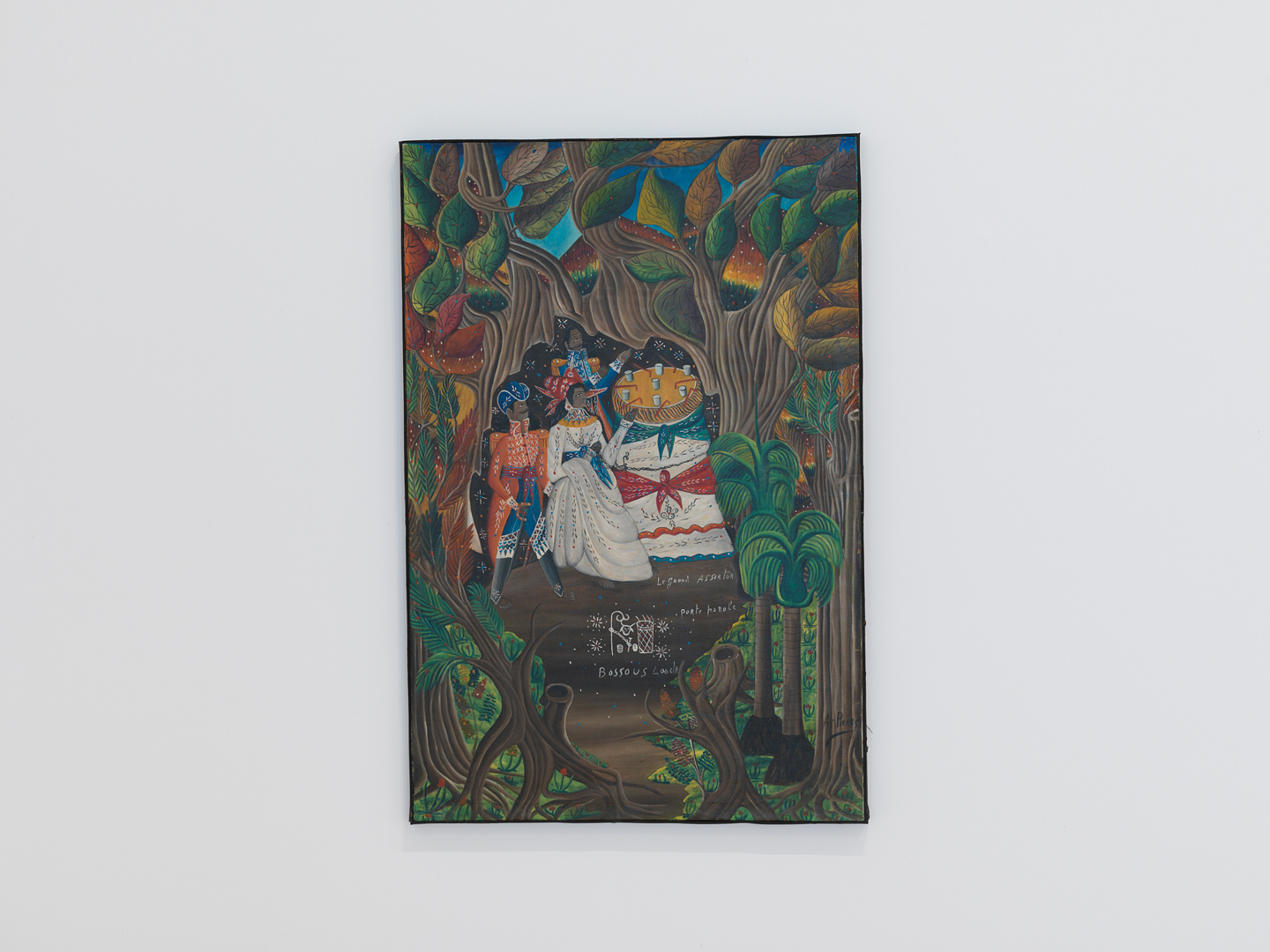
André Pierre, Le Grand Assortor (1970s), installation view, Benaki Museum—Pireos Street Annexe, Athens, documenta 14, photo: Stathis Mamalakis
—Vladimir Lucien is a poet and writer based in St. Lucia.
